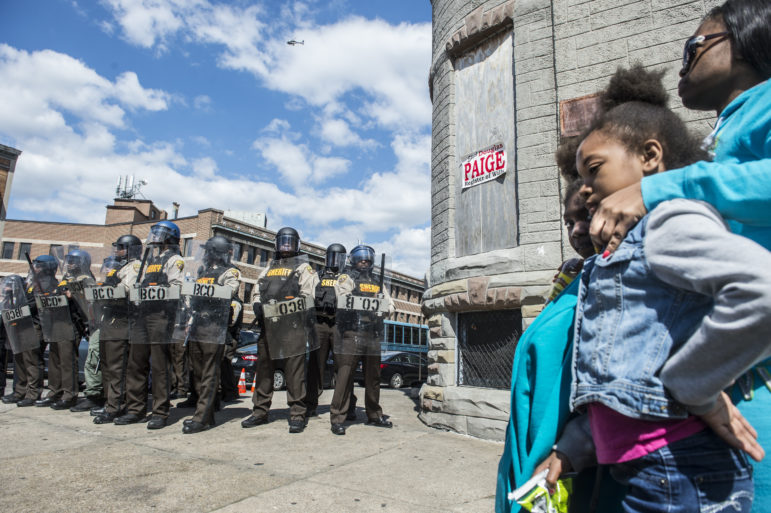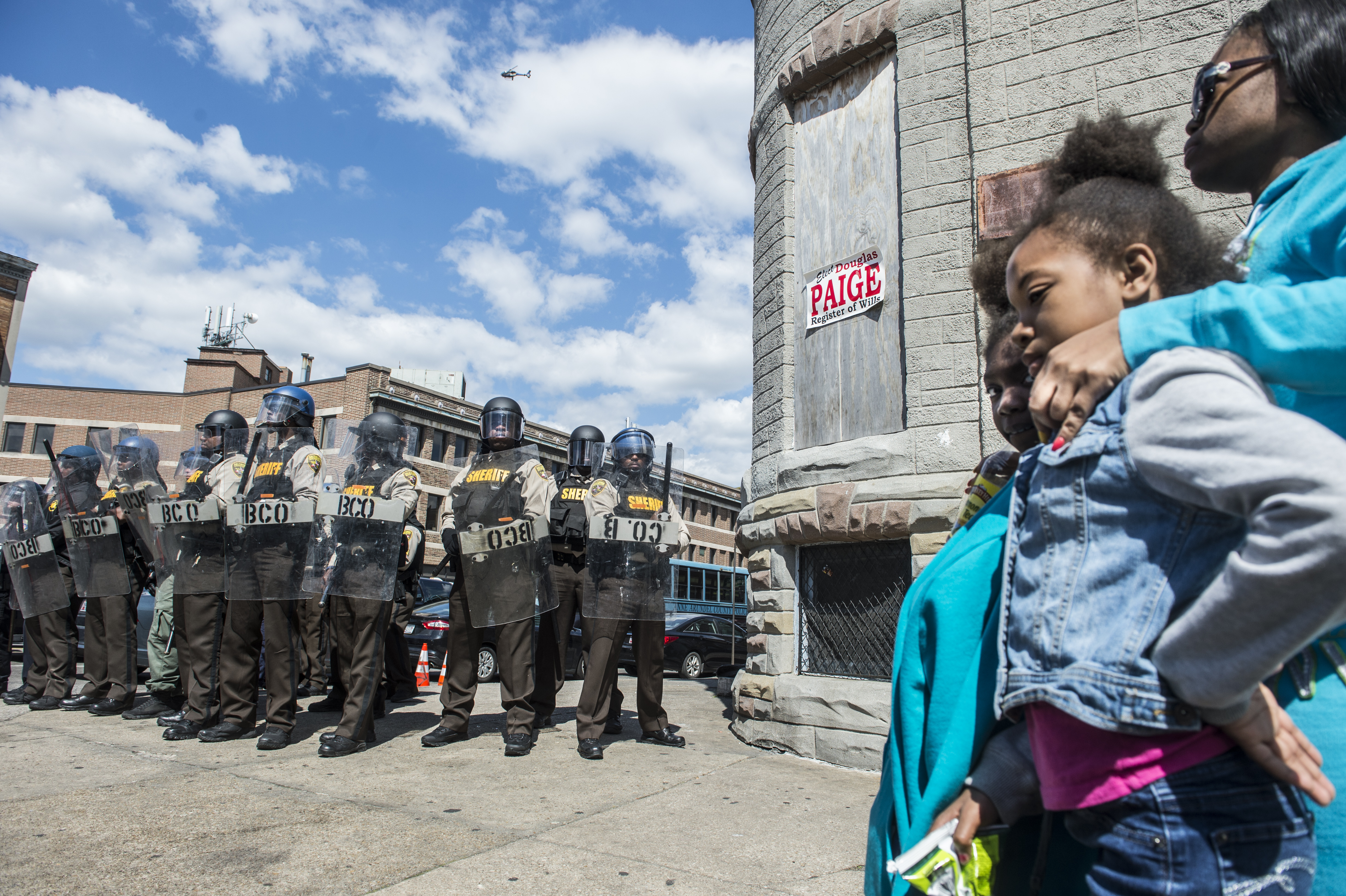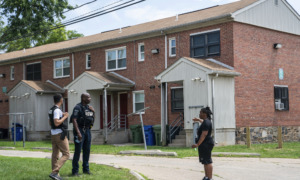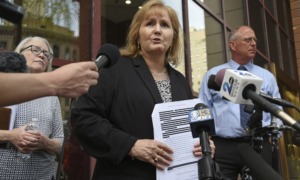
Robert Stolarik
Riot police stood in formation in Baltimore in April 2015 after the death of Freddie Gray.
BALTIMORE — A scathing Justice Department report on unconstitutional police practices in the city includes a section not often seen in federal findings — a lengthy description of how the department has mistreated youth.
The police force does not use best practices for engaging adolescents, which results in the use of unreasonable force and erodes trust within the community, said Justice (DOJ) officials in the report on Baltimore’s police force.
An officer used a Taser on a young girl without probable cause after the girl tried to walk away from the police, the report said. In a separate incident, officers used force and pepper spray against siblings standing on their own stoop as police dispersed youth gathered in a residential neighborhood.
“It is apparent that officers have not received guidance nor have been trained on well-established best practices for police interactions with juveniles that account for their developmental stage and prevent the unnecessary criminalization of overwhelmingly minority youth,” Justice officials wrote.
Justice Department officials detailed a system rife with civil rights violations of people of all ages.
While the findings are sobering, they are also powerful because they put the experiences of youth on center stage — a position observers hope will encourage reform. Other recent DOJ investigations and subsequent reform agreements in cities such as Ferguson, Missouri; Newark, New Jersey; and Cleveland have made scant, if any, mention of youth.
“This is a major step forward for DOJ and a wake-up call to law enforcement across the country that culture change has to start with youth. Every interaction packs a wallop,” said Lisa Thurau, executive director of Strategies for Youth, a policy and training organization that works to improve interactions between police and youth.
Youth who learn to distrust police carry those feelings into adulthood, perpetuating a cycle of poor relationships between officers and the residents of the communities they work in, she said.
The police department put in place a policy on contact with youth in 2015, but it does not include guidelines on youth behavior or development and does not prescribe specific techniques for officers to use, the report said.
Negotiations begin
It’s critical for youth, families and organizations concerned about how children and adolescents fare in the system to weigh in about the need for reform as negotiators fill in the details, said Gabriella Celeste, policy director at the Schubert Center for Child Studies at Case Western Reserve University. With the ear of officials, especially at Justice, they can hope to affect what ends up in the final consent decree.
[Related: Young Protesters React to Not-Guilty Verdict in Baltimore]
“The fact that the report is explicit makes it a great opportunity for youth and youth-serving organizations. It seems unprecedented in that way,” she said.
With the DOJ’s investigation complete, city and federal officials will begin to negotiate a consent decree, an agreement that lays out reforms the police department will undertake. The two sides have settled on a framework that says the police department “will ensure that its policies and training conform with legal and constitutional standards for law enforcement interactions with youth and divert youth from the criminal justice system, where possible.”
Baltimore residents may want to explore reform ideas in a letter Ohio researchers and policy experts wrote when the Cleveland police department was in negotiations with the Justice Department, Celeste said. The recommendations include training on adolescent development, adopting model Miranda warnings and interviewing techniques that account for age, and rewarding police for positive interactions with youth.
Ultimately, the Cleveland consent decree did not include explicit youth-centered requirements, but Celeste said the idea that kids are different than adults has become a part of the conversation about how to implement the reforms.
And, parallel to the consent decree, a group of local and national experts is working to develop policy guidelines that the police department could use, she added.
No matter the approach, Celeste said youth voices are critical to the conversation, both as reforms are crafted and ideally in dialogue with police officers.
Hope for training, dialogue

Dayonna Tunstall
Dayonna Tunstall, 18, said she hopes youth will be a key part of training for police officers in any reform effort. She is the youth executive leader of the Youth Engagement Training program, a training course for police officers housed at The Inner Harbor Project in Baltimore. The youth-led organization works to make the city’s Inner Harbor a safe and inclusive space through initiatives such as teen mediation.
In the training courses for police, youth offer their perspectives on positive communication, understanding teenagers’ lives and how to handle situations with teenagers based on scenarios both police and youth have actually experienced.
The courses are a conversation, one designed to make sure no one goes on the defensive, Tunstall said. She’s often heard officers comment that they benefit from hearing directly from youth and that the fledgling relationships built in training carry over into the neighborhood.
She wants the consent decree to stress the importance of training and building relationships because she’s seen first-hand how it changes interactions between officers and kids.
Working side by side, youth can feel their perspective matters and police can see there are young people who care deeply about the city, Tunstall said.
“When youth have a voice it goes a long way,” she said.
More related articles:
Reporter’s Notebook: Frustrated Baltimore Youth, Residents Look for Solutions
Reporter’s Notebook: A City Expecting the Least From a Broken Criminal Justice System
Youth Need Substance Abuse Help in Communities, Experts Say
































